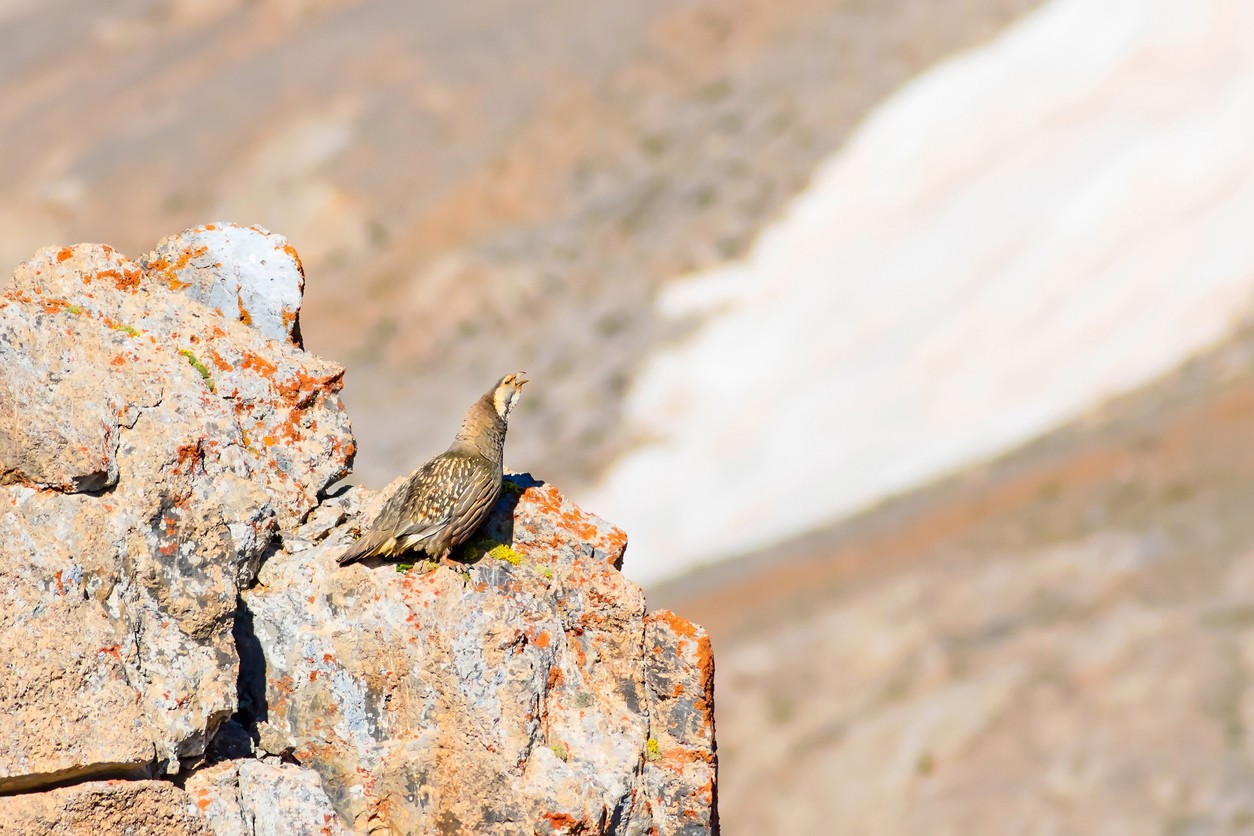Caspian Snowcock
A species of Snowcocks Scientific name : Tetraogallus caspius Genus : Snowcocks
Caspian Snowcock, A species of Snowcocks
Botanical name: Tetraogallus caspius
Genus: Snowcocks
Content
Description General Info

Description
This snowcock ranges from 56 to 63 cm (22 to 25 in) in length, 95 to 105 cm (37 to 41 in) in wingspan and 1.8 to 2.9 kg (4.0 to 6.4 lb) in weight. Its plumage is patterned with grey, brown, white and black, but this snowcock looks pale gray from any distance. The breast is pale gray, the throat and a white patch on the side of the neck are white, and the nape is dark gray. In flight, this wary bird shows white flight feathers and undertail. Male and female plumages are similar, but juveniles are slightly smaller and duller in appearance. There are three races differing in plumage saturation, becoming paler from west to east. The Caspian snowcock has a desolate whistling song, vaguely like a Eurasian curlew, sooo-looo-leeee. It differs from Caucasian snowcock in that it does not have the drop in pitch at the end of the song shown by that species. The calls include loud cackles and bubbled buck-buck-buck-buck-burrrrrr. 
Size
61 cm
Nest Placement
Ground
Feeding Habits
Caspian Snowcock predominantly consumes seeds and various types of vegetable matter. It forages ground vegetation, displaying adaptive behaviors for high-altitude environments. Distinct preferences or dietary adaptations include efficient digestion of fibrous plant materials.
Habitat
Caspian Snowcock primarily inhabit mountain slopes, typically at altitudes ranging from 2400 meters upwards to the snowline, occasionally occurring as low as 1800 meters and as high as 4000 meters. Their preferred terrain includes steep, snow-free slopes, screes, rocky outcrops, and gorges. They are also found in the transition zones between the treeline and permanent snow areas, and they may venture into adjacent forested regions during late summer. This species thrives in environments with a mix of snow patches and vegetation, such as herbs and grasses, suitable for foraging and shelter.
Dite type
Herbivorous
General Info
Feeding Habits
Bird food type

